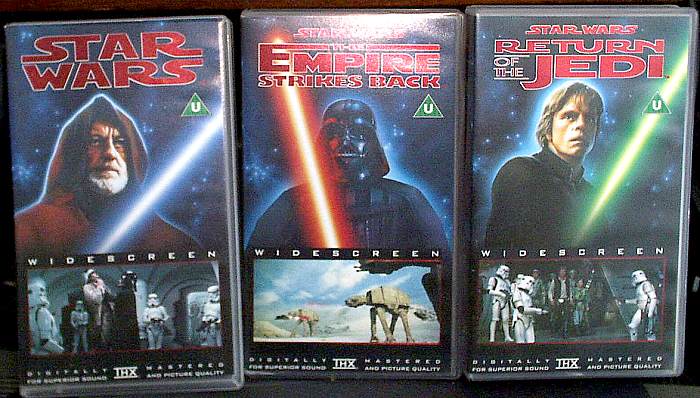- Time
- Post link
The GOUT was made from an interpositive that was printed in 1985. It looks incredibly grainy, and while the original negative looks grainier than the Lowry-treated 2004 master, only by a bit. If you take a look at other films from around the same time, such as the Directors Cut of Alien and the Theatrical Cut of Blade Runner from the 2003 and 2007 DVDs, those are both taken from interpositives, and have had little or no cleanup done. And they look fantastic. The only time you notice grain is on the optical dupes, which is the way it should be. The Alien IP was newly printed of course, I don't know about Blade Runner but the movie was unpopular and probably hardly got used, but by the grain structure it looks like an original IP to me. And thats the quality that Star Wars should look.
But the Star Wars IPs look really, really bad, especially the first few reels of Star Wars. An interpositive just shouldn't look that bad, especially since it was only run a couple times, since it was created in 1985 for home video.
I have three theories to explain this:
1) It was not derived from the original negatives. If, for instance, the IP was printed off of the existing Internegative, it would have the generational loss you would see in a theatrical print. Which is precisely what the GOUT transfer resembles, in terms of grain and damage. I find this a bit unlikely though, just because it makes no sense to do that.
2) The duplicate stock was very bad. In 1985, there was a batch of Kodak stocks that was excessively grainy, and it was replaced the next year with an improved version. Aliens was shot on this, which is why that films looks really grainy, and Cameron is currently de-graining it for the Blu Ray release because he says he was never happy with how grainy it was (I disapprove, but that's another case). Now, negative raw stock is totally different from duplicate stock. I don't know if Kodak's duplicate stocks that year were affected by the issue. The stock Aliens was shot on was a low-light special stock, and low light = graininess, so its no surprise that grain would be a problem. I have a feeling that the duplicate stocks would not be afflicted by this issue, but just throwing it out there that 1985 was a bad year for unusual grain for what it is worth. The duplicate stock of Star Wars might not be so bad as to have the problem of the Aliens stock, but it would definitely be grainier than an interpositive printed today because the granularity of all stocks in the 70s and 80s was poorer.
3) The negative was really dirty. Some of the grain is dirt on the negative (white specs), and the 1985 IP probably was never cleaned so by 1993 affter being run a half dozen times it had picked up some dirt.
The other factors may be that previous releases, being not from the master directly, do not show the grain because the transfers are softer. The noise reduction on them might also have been better.
I would say that possibly a combination of most of these factors is at fault. You can see in the Senator theatre photos, and also other sources such as the 70mm cells which are at least the same generation as an IP and probably one generation higher, that the films were never THAT grainy. The Senator example is a theatrical print, which has gone from negative to interpositive back to internegative and then the print itself, and yet it looks about 50% of the GOUT levels. It might look worse when you see it in motion, but only a bit. This print was back when the negative was in a better state, but it still passed through an IP and IN, and also the grain of the print itself. So, the problem is the specific 1985 IP. It must just be much grainier than the previous one.
Which would point to problem #2 as the main culprit. You can see negative dirt on the GOUT, but you can see some on the Technicolor print, so that can't be the problem either. There's print dirt and dust on the IP itself, but thats not what is making the image look like shit, it's just making the problem already there worse. The problem also seems to inexplicably get better as the film progresses, as the first two or three reels are really bad and then it gets better; I don't know how to explain that, maybe the negative of those reels was just much dirtier so the image just looks grainier.
I'm kind of rambling now, but the situation is a bit confusing.









